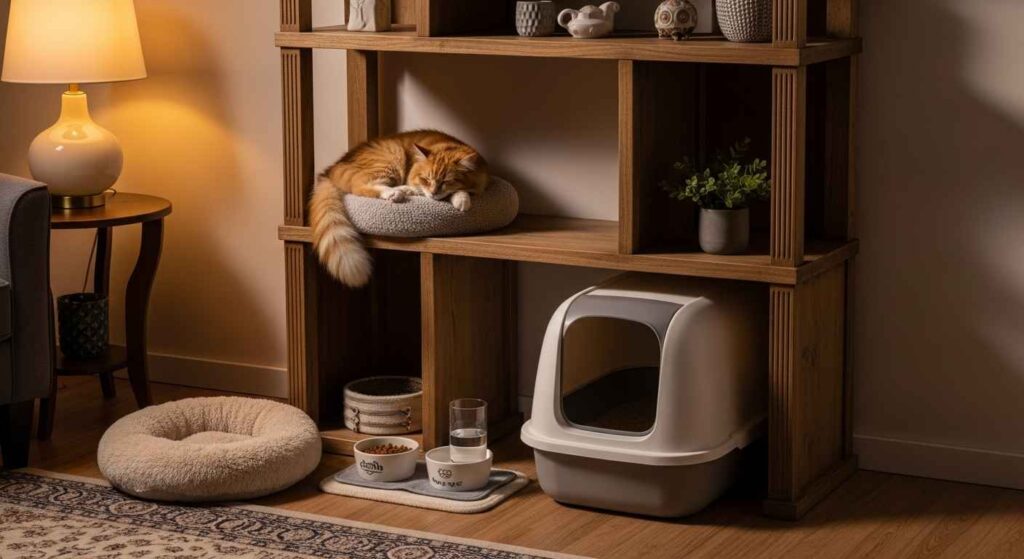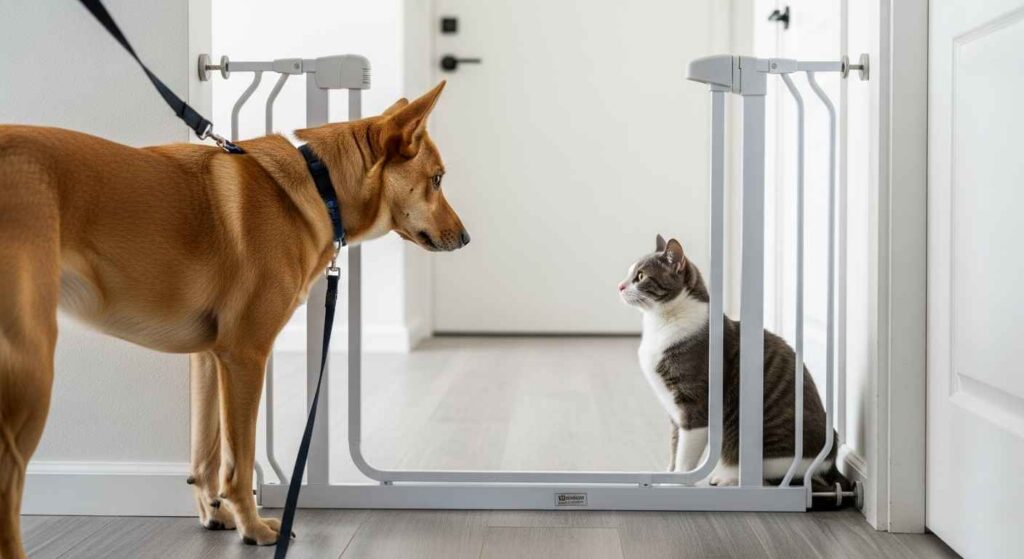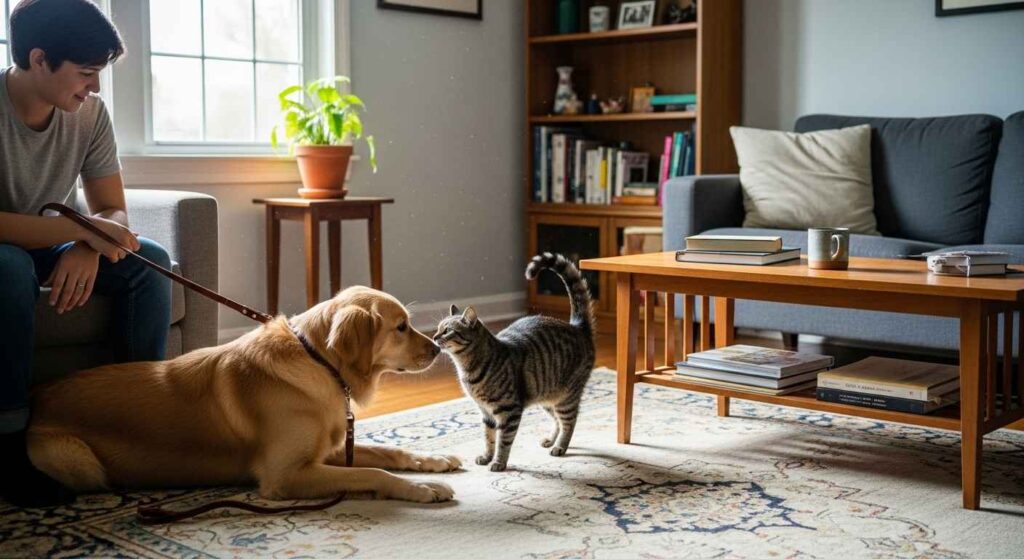Bringing a dog and cat together can create a happy home, but it takes careful steps. This guide explains how to introduce them safely, using proven methods from animal experts. Follow these steps to help your pets get along. Every pet is different—some bond quickly, others need months. Watch their behavior closely and be patient. If issues arise, consult a vet or trainer. Use our Pet Compatibility Checker to check if your dog and cat’s breeds and traits match well.
Why Introductions Matter
A rushed meeting can stress both pets. Dogs may chase, and cats may hide or scratch. Slow introductions build trust and reduce injury risks. Cats need escape routes, like high perches. Dogs need clear commands, like “sit” or “stay.” Planning ahead prevents problems. Common questions include: How long does it take? Days to months, depending on the pets. What if the dog chases the cat? Separate them and try again later. Can all dogs and cats coexist? Most can with the right steps.
Prepare Before the Meeting
Preparation sets the stage for success. Start by ensuring both pets are healthy—take the new pet to a vet before bringing them home. Keep them in separate rooms for at least three days. Let them hear and smell each other without direct contact. Swap items like blankets to share their scents. This helps them adjust early. For health concerns, use our Pet Symptom Checker.
Set Up Safe Areas
Create a safe space for the cat with food, water, a litter box, and toys. Add high shelves or a cat tree for climbing. The dog needs a crate or gated area to stay calm. These spaces give each pet a secure spot during introductions.

Step 1: Share Scents
Start with scent exchange. Rub a cloth on one pet and let the other sniff it. Do this daily. Feed them near a closed door, moving bowls closer over days. This links the other pet’s smell to positive things like food. Watch for calm behavior, like relaxed tails or ears. This step may take a week. For safe feeding tips, see Can Cats Eat Strawberries Safely?.
Step 2: Let Them See Each Other
Use a baby gate or slightly open door for visual contact. Keep the dog leashed and let the cat approach freely. Keep sessions short—five minutes at first. Reward calm behavior with treats. If the dog barks or the cat hisses, stop and return to scent sharing. Patience is key.

Step 3: Face-to-Face Meetings
Move to a large room for controlled meetings. Keep the dog leashed and let the cat move freely. Have two people: one to hold the dog, another to monitor the cat. Reward calm actions with treats. End the session if tension appears, like growling or swatting. Repeat daily, gradually increasing time as they relax. A common question is, “What if my cat swats the dog?” Slow down and retry earlier steps. For dog training help, check Common Dog Owner Mistakes.
Step 4: Supervised Time Together
When they’re comfortable, let the dog drag the leash but stay in the room. Watch for warning signs: dogs staring or stiffening, cats flattening ears or puffing up. If all goes well for days, try short unsupervised moments—start with a few minutes. Don’t leave them alone long-term until they consistently ignore each other.

Watch for Problems
Trouble signs include growling, chasing, or constant hiding. If these happen, separate them and restart from scent sharing. Some dog breeds are more prone to chasing—learn more with our Pet Breed Finder Quiz. If problems persist, consult a trainer for commands like “leave it” or a vet for advice. For cat behavior insights, read Why Does My Cat Follow Me Everywhere?.
Special Cases: Puppies and Kittens
Puppies are energetic and need longer leash time. Kittens are fragile, so protect them from rough play. Wait until kittens are older for free interactions. A common question is, “Do puppies and cats bond easier?” Often yes, especially when young. Check pet ages with our Pet Age Calculator.
Long-Term Tips
Maintain separate feeding areas—dogs may eat cat food, which can cause issues. Clean litter boxes daily to avoid dog interference. Trim nails to prevent scratches; see How to Cut Cat Nails: Simple Guide That Actually Works. If odors persist, check How to Get Cat Pee Out of Carpet. Use our Pet Food Safety Checker for safe feeding.
When to Get Help
If fights occur, contact a vet or behavior expert immediately. Some pets may never fully bond, and that’s okay—keep them separated if needed. For expert advice, visit the American Society for the Prevention of Cruelty to Animals at aspca.org.
With patience, most dogs and cats can share a home peacefully. For a new pet name, try our Pet Name Generator. This guide, built on expert advice from animal organizations, ensures a safe and effective introduction process.
